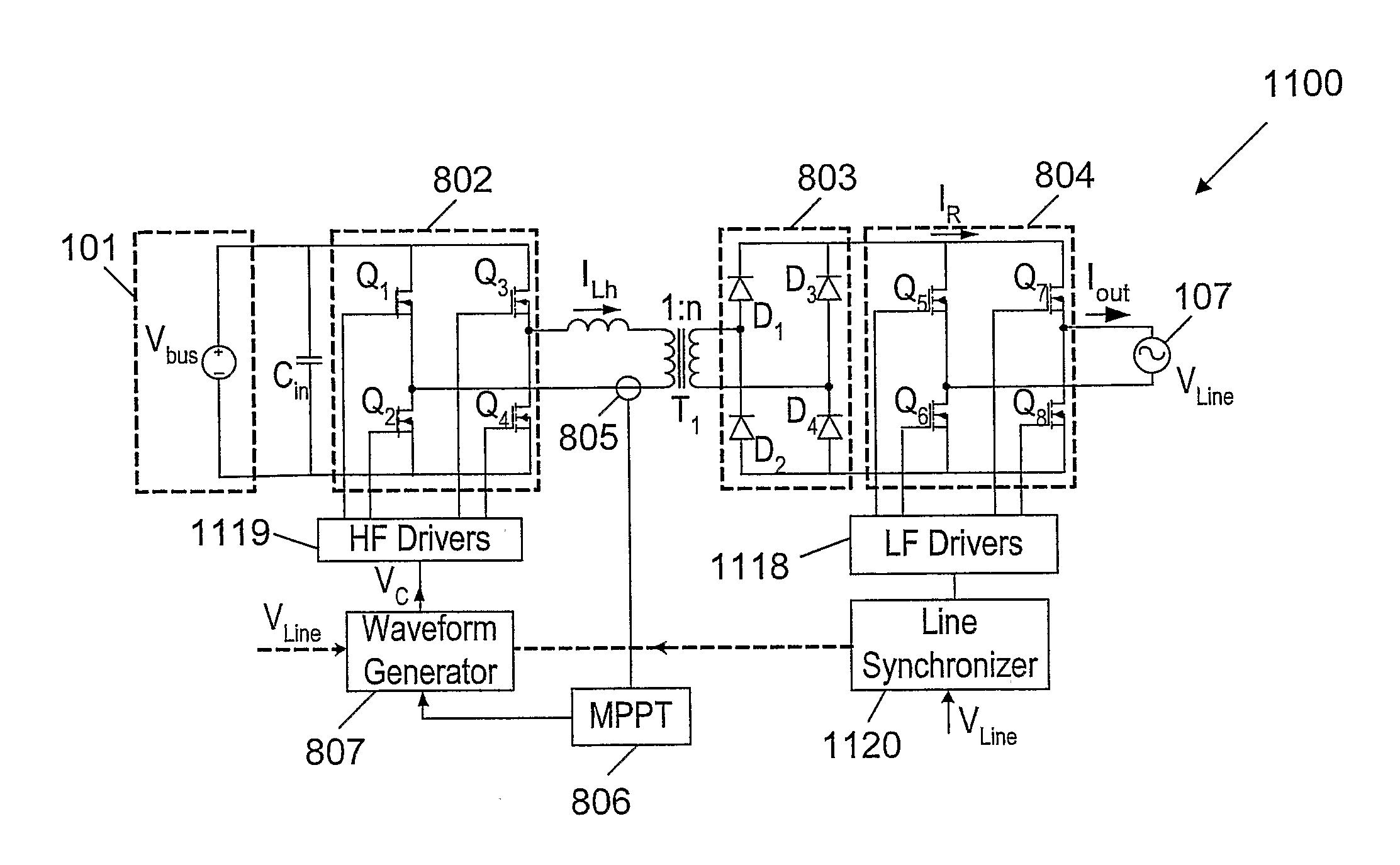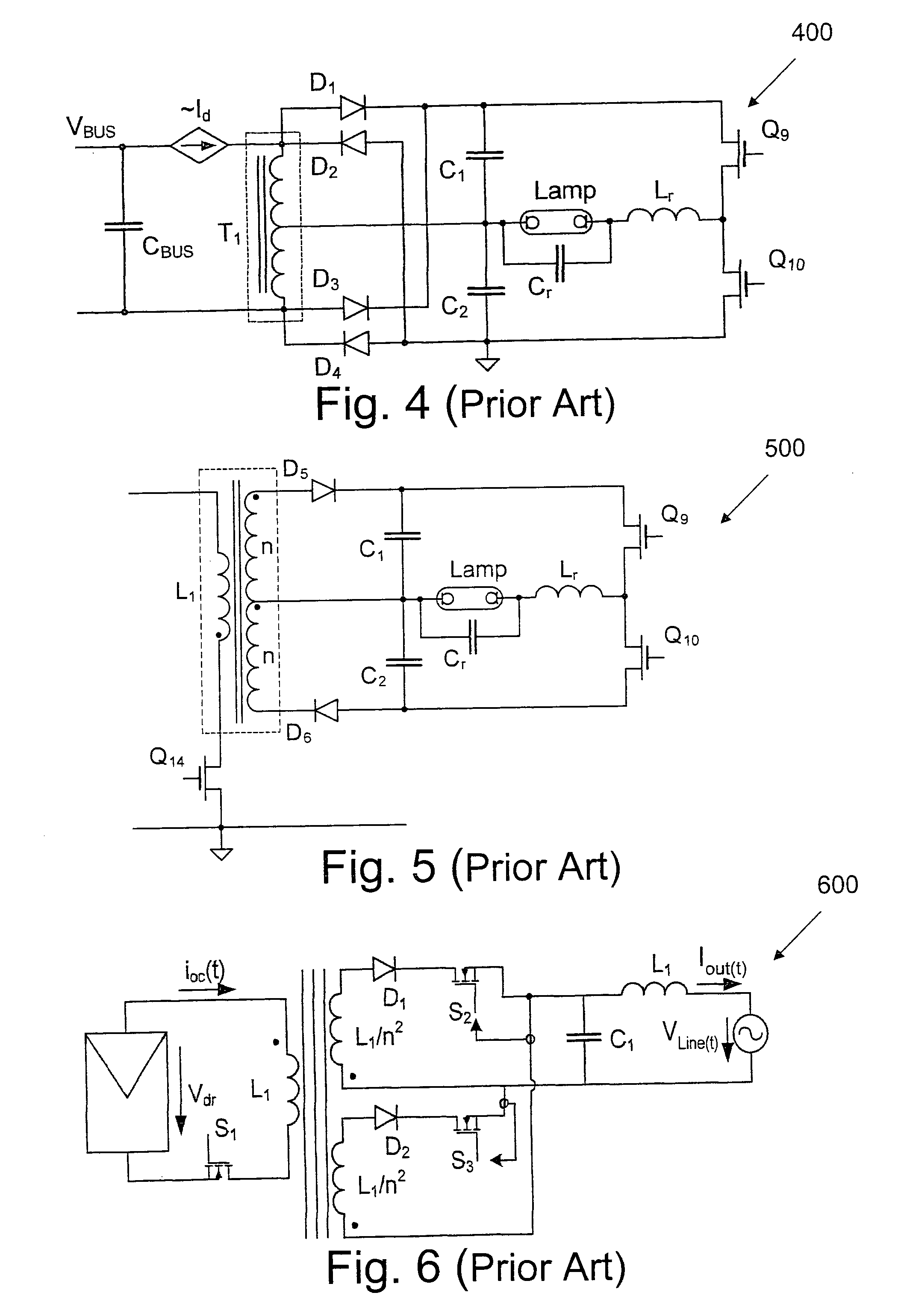Method And Circuitry for Improving the Magnitude and Shape of the Output Current of Switching Power Converters
a technology of output current and magnitude, applied in the direction of electric variable regulation, process and machine control, instruments, etc., can solve the problems of system malfunction, severe damage to feeding sources, and limited mode of operation, so as to reduce power and stress of said switches
- Summary
- Abstract
- Description
- Claims
- Application Information
AI Technical Summary
Benefits of technology
Problems solved by technology
Method used
Image
Examples
Embodiment Construction
[0068]The present invention is directed to a method and circuitry (apparatus) that behaves as an inherent current source, for injecting a sinusoidal current into a power line.
[0069]FIG. 8 is a schematic block diagram 800 of a of a circuitry (apparatus) of a grid-connected inverter for injecting a current into a Power Line 107, according to an embodiment of the present invention. The circuitry of the grid (Power Line 107) connected inverter comprises: an Electrical Energy Source 101 for providing the substantially DC voltage to said circuitry; an Inverter 802 for converting said substantially DC voltage of said Electrical Energy Source 801 to a high frequency alternating voltage Vinv; a Waveform Generator 807 for controlling said high frequency alternating voltage Vinv by means of a control signal Vc fed into said Inverter 802; an inductor Lh connected in series to an output of said Inverter 802 for generating an alternating current ILh due to the high frequency alternating voltage V...
PUM
 Login to View More
Login to View More Abstract
Description
Claims
Application Information
 Login to View More
Login to View More - R&D
- Intellectual Property
- Life Sciences
- Materials
- Tech Scout
- Unparalleled Data Quality
- Higher Quality Content
- 60% Fewer Hallucinations
Browse by: Latest US Patents, China's latest patents, Technical Efficacy Thesaurus, Application Domain, Technology Topic, Popular Technical Reports.
© 2025 PatSnap. All rights reserved.Legal|Privacy policy|Modern Slavery Act Transparency Statement|Sitemap|About US| Contact US: help@patsnap.com



